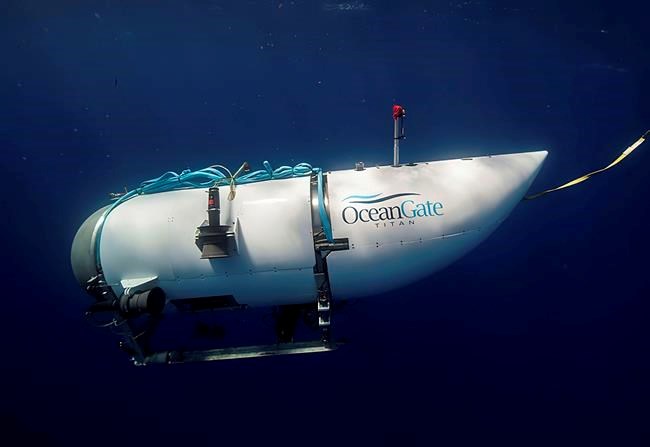HALIFAX — A German man who was among the first customers to successfully descend to the Titanic wreck aboard a submersible destroyed in an implosion one week ago believes the tragedy will put an end to adventure tourism at the site for the foreseeable future.
Arthur Loibl made the journey on Titan in 2021 with the submersible company’s CEO Stockton Rush and French Titanic expert Paul-Henri Nargeolet. Both men were among the five people who perished in the catastrophic incident that prompted a frantic international search in a remote area of the North Atlantic for most of last week.
British billionaire Hamish Harding and Pakistani businessman Shahzada Dawood and his 19-year-old son, Suleman, were also killed.
“I think this kind of public tourism died last week,” Loibl said in a phone interview Sunday. “I think it will take a very long time before somebody will try it again. They will need to make a sub that is much more safe and it will take a lot of money.”
The 60-year-old retired businessman and adventurer from Straubing, near Munich, said he welcomes news that Canada’s Transportation Safety Board has begun an investigation it says will look into “all aspects” of the tragedy. The RCMP also said Saturday it would be launching a preliminary probe to determine if a criminal investigation is necessary.
“I think it would be very good if they do this because I think there were a lot of issues … and it shouldn’t happen again,” said Loibl.
Titan had an unconventional carbon-fibre hull, and marine engineers have drawn attention to the fact the vessel was never “classed” or certified by an independent third party to ensure it met certain safety standards. In 2018, a group of engineers wrote a letter warning that the company's “experimental” approach could have “catastrophic” consequences.
When asked what needs to change as a result of any investigation, Loibl said at the very least vessels like Titan need to be certified.
He said the submersible experienced problems with its battery and balancing weights during his trip, turning a regular eight hour journey into more than 10-hours because of the 90 minutes of repairs that were required. The five-person crew remained bolted inside the vehicle while the repairs took place.
“It’s not comfortable, it’s only a bottom (floor) where you have to sit and you can only stay on your knees, you cannot stand,” he said. “There are small windows where it’s possible for only one or two people to look out and you are sitting very near to each other, legs are over legs. You really have no space inside the sub.”
Loibl said he was never scared, but admits to being nervous during the 2.5-hour-long descent to the wreck site — completed with minimal lighting to conserve battery power.
“You really hear nothing. It’s quiet … if you are not speaking to each other it’s absolutely quiet,” he said.Â
But everything changed once Titan arrived at its destination, he added.
“When we reached the bottom I was happy and after 20 minutes when I saw the Titanic I was really happy. My mood was changing because it was a dream come true.”
He described viewing the hulking wreck up close as “amazing” because of the vessel’s history and the fact that only a small number of people in the world have done so.
Loibl called the experience a “unique adventure in my life.” Still, he has conflicting emotions given what’s happened.
“When I look back I’m really happy that I survived,” he said. “I’m very sad that my two buddies P.H.(Nargeolet) and Rush died. I feel very bad because I was feeling that this could have happened to me.”
This report by The Canadian Press was first published June 25, 2023.
Keith Doucette, The Canadian Press



